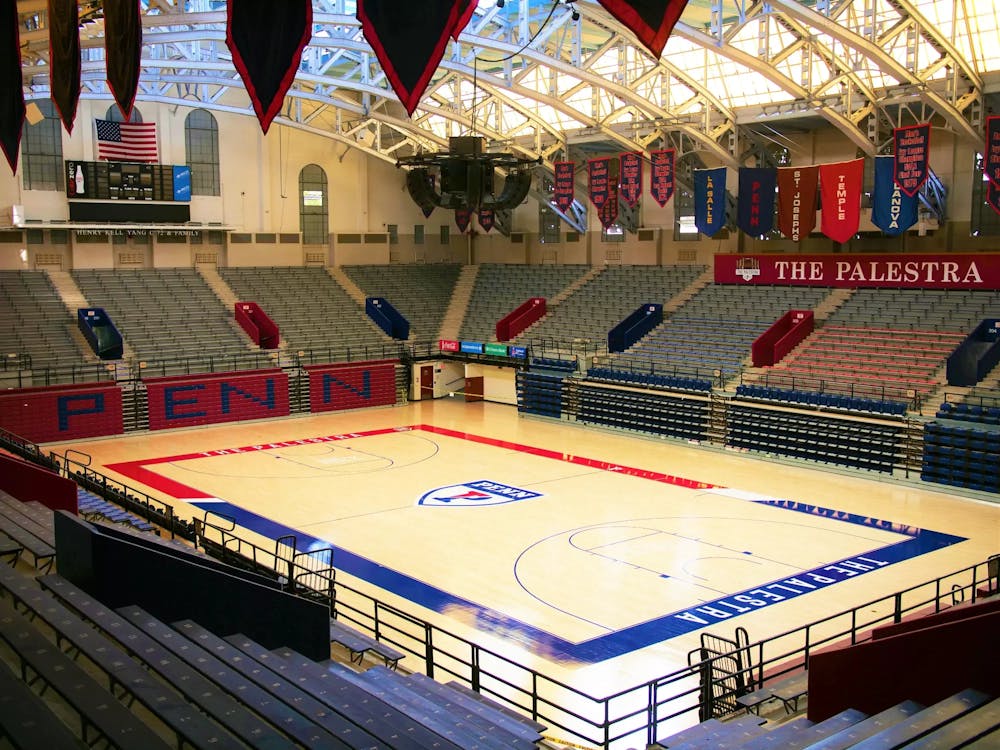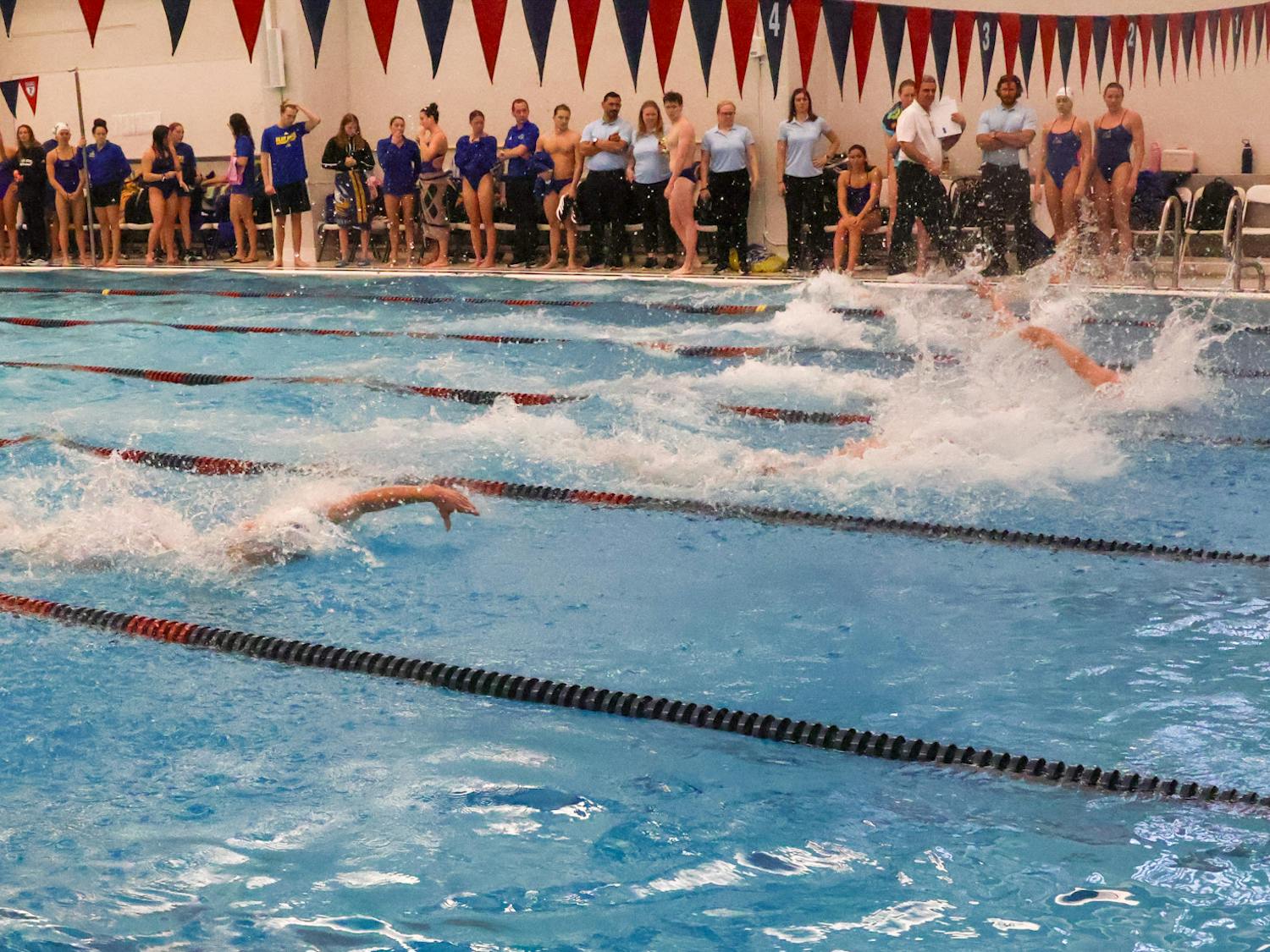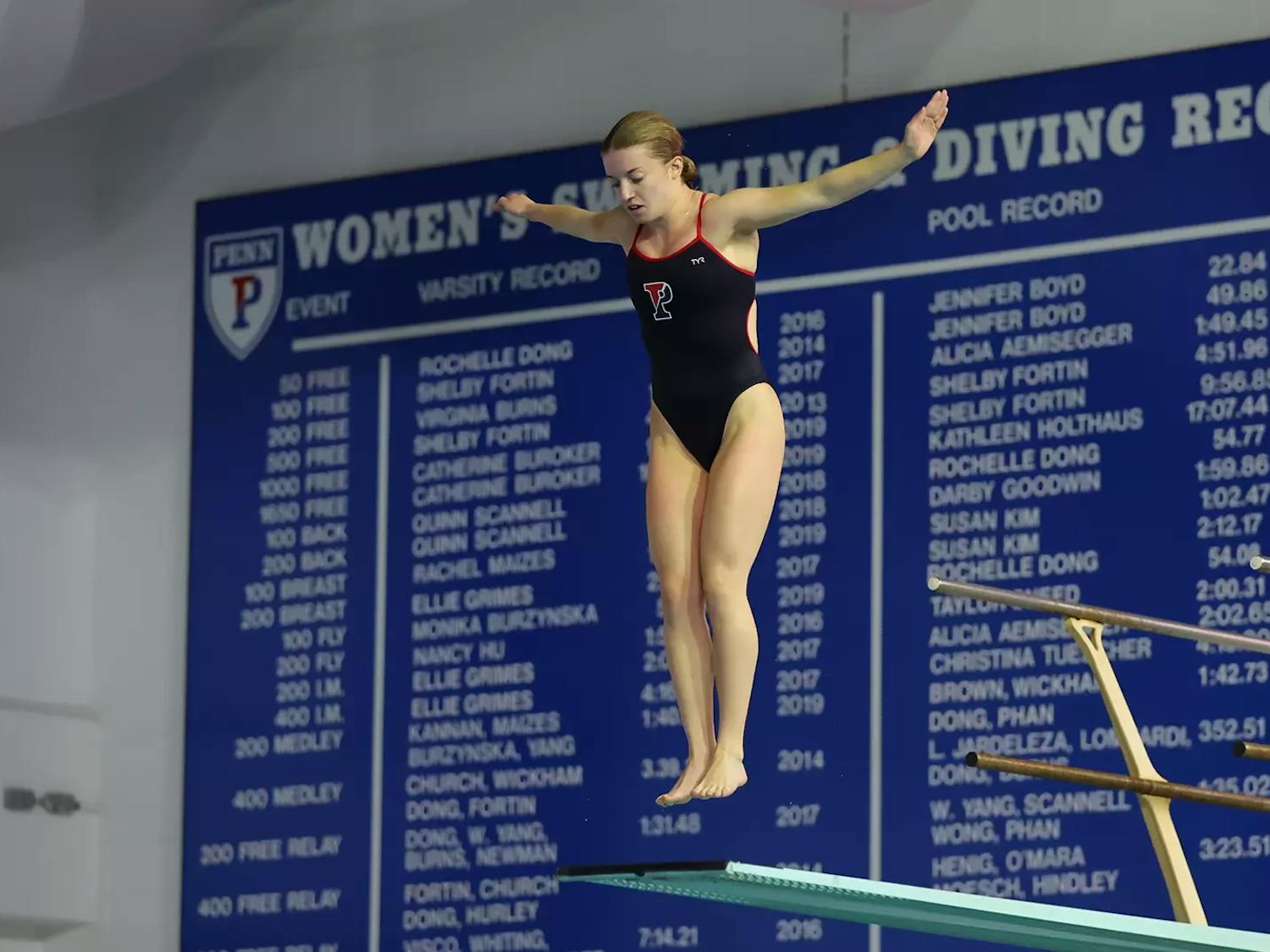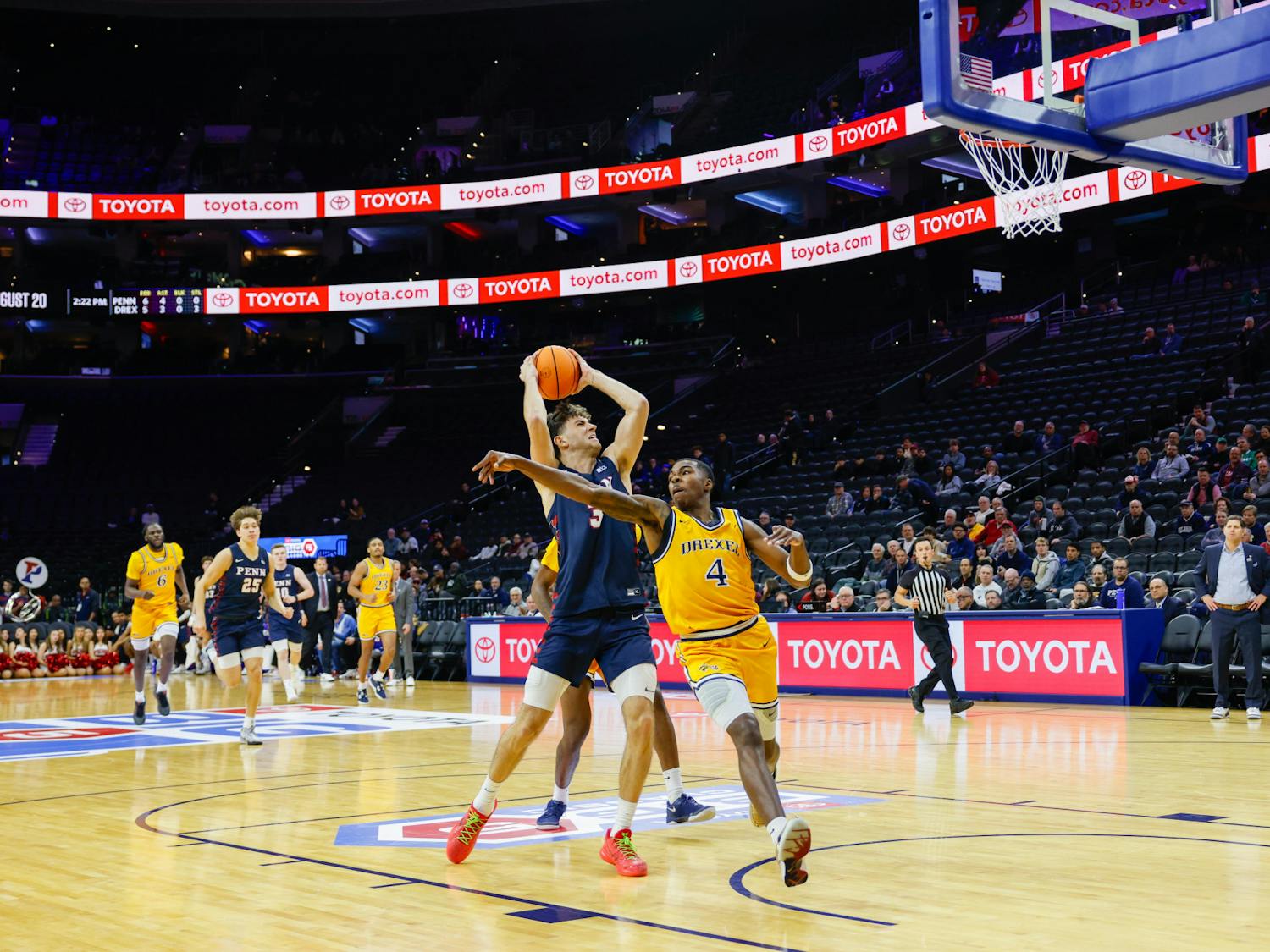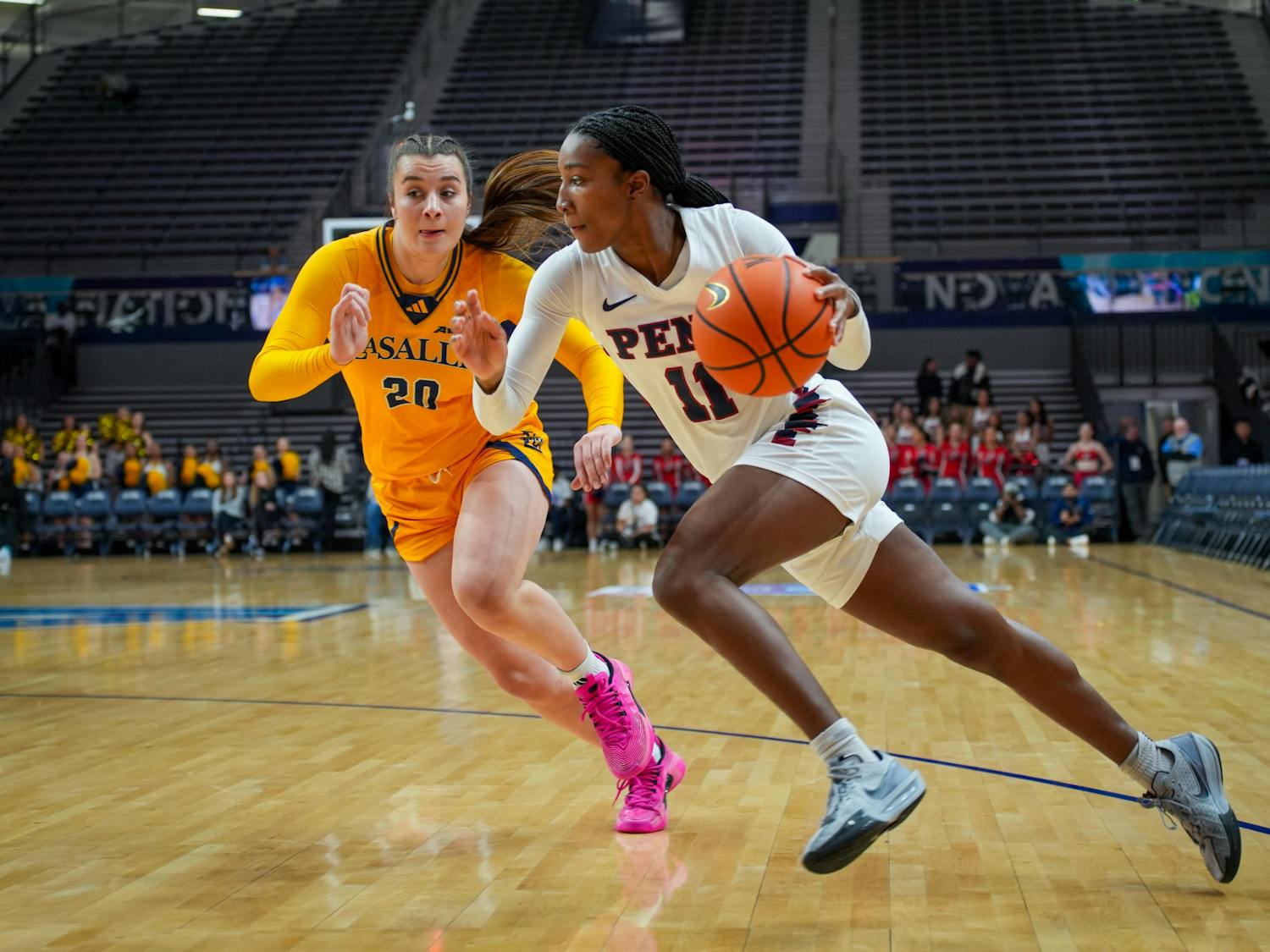The Ivy League is one of the nation’s most storied conferences, and that tradition extends to the venues the Ancient Eight’s teams call home. During my time with The Daily Pennsylvanian’s sports department, I’ve had the chance to cover Penn’s basketball teams at each school in the conference, allowing me to appreciate the unique aspects of each campus and arena.
Let’s break down each of the Ancient Eight’s homes for hoops, including the pros and cons of each spot.
8. Brown — Pizzitola Sports Center
Times visited: 2025 Ivy Madness, Penn women’s basketball at Brown on Feb. 18, 2023
Like most mid-major conferences, many of the Ivy League’s smaller venues are more reminiscent of high school facilities than the mammoth homes of high-major programs. The Pizzitola Sports Center, a 2,800 seat arena that plays home to Brown, fits that bill.
While the list has to have a No. 8, “The Pitz,” as Bears fans lovingly call it, is not without its merits. Its smaller scope makes for many solid spectator vantage points, and its additional features such as concessions and restrooms are up to par. Its location also provides a number of convenient parking options on the surrounding streets.
That said, the Sports Center has neither the glossy aesthetic of a more modern arena or the traditional mystique of other Ivy League venues, while its layered seating area on one sideline hinders the feeling of a cohesive crowd. Its exterior is also inconspicuously connected to a number of other athletic facilities, which is true of many Ivy arenas but limits its grandeur as a standalone building.
Finally, Brown’s home crowd, or lack thereof, is impossible to divorce from the arena itself. The Bears finished seventh in the Ivy League in 2024-25 in attendance across men’s and women’s basketball with a combined average of 1,427 attendees.
RELATED:
‘No prouder moment’: Fran McCaffery welcomed as Penn men’s basketball coach in press conference
7. Dartmouth — Leede Arena
Times visited: Penn men’s basketball at Dartmouth on Feb. 23, 2024
The arena with the second-smallest seating capacity in the Ivy League, Leede Arena is limited primarily by its lack of seating along either baseline. This further influences the high school gym aesthetic while also hurting shooters’ depth perception with the presence of a wall directly behind the basket.
In terms of its strengths, the arena’s high vertical seating creates a decent feeling of scope, and its color-blocked seats do justice to the school’s “Big Green” moniker. It also recently installed a circular, unobtrusive jumbotron. Leede Arena is housed within the larger Berry Sports Center, but the center’s wood finishing is a nice touch that helps give it a distinctive, storied feel.
The Big Green also rank near the bottom of the conference in fan volume, ranking sixth in combined basketball attendance with a 1,611 average.
6. Cornell — Newman Arena
Times visited: Penn men’s basketball at Cornell on Feb. 28
The home of the Big Red follows the same vertical banks structure as Leede but possesses one distinct difference that was highly material in my one-game sample size: student zones along the baselines.
During Penn’s visit to Ithaca earlier this year, the Quakers’ basket was packed with vocal Cornell supporters who produced significant volume for such a compact area. Penn shot 2-12 from three in the first half and trailed by 36 points at the break in that game. That said, the crowd is not typically a factor in Big Red games, with Cornell ranking last in the conference in combined attendance with 1,293 average attendees between men’s and women’s hoops.
Apart from that, Newman is rather standard, holding 3,500 and offering a combination of captain’s chair and bleacher seating. The Big Red’s collection of banners, honoring everything from Ivy League championships to NIT appearances to fellow Ivy League schools also give the arena a historic feel.
5. Columbia — Levien Gymnasium
Times visited: Penn men’s basketball at Columbia on March 1
Nestled in the urban center of New York City, Levien Gymnasium is the league’s only underground arena. It is also one of the conference’s smaller courts, with entry doors located just a few feet from the baseline and the closest spectator restroom location upstairs in a shared restaurant and study area.
That said, Levien utilizes its space well, stacking 2,700 seats along its vertical banks and creating a close-knit feel. Another atmospheric plus of the building is its stellar accenting, with each surface and wall outfitted in the Lions’ signature shade of blue.
The Lions also have strong home attendance. On the women’s side, the first-place Lions drew a league-leading 1,602 spectators per home game, while the men reached an average of 1,216 despite finishing last in the conference table. Their combined figure of 2,818 was good for second in the conference in the 2024-25 season.
4. Harvard — Lavietes Pavilion
Times visited: Penn men’s basketball at Harvard on Feb. 24, 2024
Hosting the smallest seating capacity in the conference, Lavietes Pavilion features a similar layout to Leede Arena, with no seating along the baselines and vast banks on either sideline.
However, where Lavietes separates itself is with its highly unique skylight roof, a rarity in arenas across the nation. This feature makes the arena feel significantly larger and creates a unique aesthetic for day and early evening games.
The pavilion also features a four-sided jumbotron, with screens angled down at spectators to further induce a sense of larger scope, and a neat lobby and ticketing area that was renovated in 2018. Additionally, though it holds just 1,636 people, Lavietes’ intersection of a limited capacity and decent nightly attendance (2,182 combined average) results in a solid home-court advantage for the Crimson.
3. Yale — John J. Lee Amphitheater
Times visited: Penn women’s basketball at Yale on Feb. 17, 2023
The term “amphitheater” is rarely used as a moniker for a sports arena, but Yale’s venue earns the distinction. The Bulldogs’ home court features wood seating, elevated spectator banks from the court, and a set of seats overlooking the action along one baseline, making for a game environment that feels one part sport and one part Shakespearean play.
The amphitheater also features Yale-blue accenting and a 2,532-person capacity. While the arena does not possess a jumbotron, its auxiliary screen located among the overlook seats does the job. The gymnasium itself is also located within the larger Payne Whitney Gymnasium, an ornate building with a gothic exterior to match the feel of the venue itself.
The facility is also conveniently located on Yale’s campus, integrating seamlessly into the New Haven architectural aesthetic.
2. Princeton — Jadwin Gymnasium
Times visited: Penn men’s basketball at Princeton on Feb. 10, 2024, 2023 Ivy Madness, Penn men’s basketball at Princeton on March 4, 2023, Penn women’s basketball at Princeton on Jan. 16 2023
On paper, Jadwin should be one of the Ivy’s worst places to take in a game; it shares its indoor space with a track, three of its four seating banks are extremely limited, and its expansive height and width make it feel like the game is being played in an airplane hangar.
But when you actually take in a game on the Tigers’ home court, it is one of the most electrifying environments the conference has to offer. Princeton’s league-leading average combined attendance of 4,134 people across men’s and women’s basketball certainly plays a part, but so does the gym’s unique structure, including its mammoth sideline bank and capacity to amplify sound.
The other aspects of the facility are state of the art, with a 2017 lobby renovation making for a professional-level entry area. It also features program legends along each wall and a large tiger statue in the center, contributing to an overall venue that is sleek and modern while maintaining an Ivy League feel.
1. Penn — The Palestra
Times visited: Numerous
In the hallowed halls of college basketball history, the Cathedral of College Basketball stands alone. No venue has hosted as many games, and no other Ivy League arena compares to the legacy and stature of Penn’s home court.
First, there is the size. The Palestra holds nearly 9,000 people, and though it rarely reaches that number in the modern day, nights like Penn men’s basketball’s upset win over Villanova in 2023 (6,723 attendees) demonstrate a ceiling that no other Ancient Eight arena can match. With more seats, the Palestra features seating banks on every side of the court, and its even inclines on every side mean there isn’t a bad seat in the house.
The Palestra’s additional features, like its large windows and high-arching ceiling, also frame the Ivy’s grandest stage. The court has been home to basketball legends like LeBron James and Wilt Chamberlain and integrates itself in the Philadelphia community by hosting local high school championships. Few arenas in the world are iconic enough that their silhouette alone is recognizable. Count the Palestra among them.
The Ancient Eight has a rich basketball history, and its arenas are home to some of the nation’s oldest programs. But as far as comparisons go, none compare to the Palestra.
WALKER CARNATHAN is a College junior from Harrisburg, Pa. studying English and cinema and media studies and also a former DP sports editor. All comments should be directed to dpsports@thedp.com.


